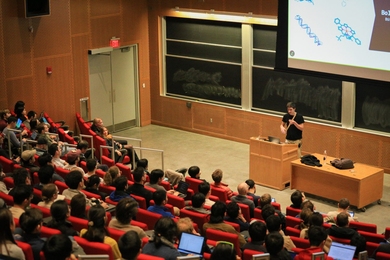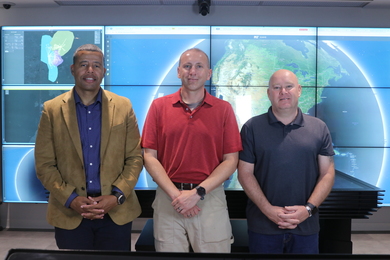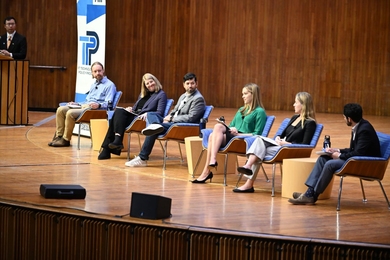MIT and ScienceMedia are working together on an unusual joint project for a university--the development of toys.
Faculty and staff at MIT, working with the Newton toy manufacturer and marketing firm, have developed experiments for child's play based on scientific principles--for example, where the "sweet spot" is on a bat and how to throw a curve ball.
The SportsTechT toy line packaging will carry the words, "Designed in collaboration with the Massachusetts Institute of Technology." Royalties will go to MIT's Council on Primary and Secondary Education, which develops programs to improve K-12 education in the United States.
"Working with ScienceMedia gives us an opportunity to reach a much larger segment of the population with educational messages about science," said Professor Ronald Latanision, chairman of the MIT Council.
The first toys to be developed as part of this agreement debuted at the recent Toy Manufacturers of America annual international toy fair in New York City. These sports toys are focused on baseball, football and basketball, teaching kids how to play and excel at a sport by using simple tools and experiments that demonstrate scientific principles. Joan Roth '81, founder of ScienceMedia, came up with the idea for the company about a year ago at an auction she co-chaired to raise money for the Council.
"At the auction we had faculty dressed up as famous scientists of the past--Newton, da Vinci, Madame Curie, Einstein. They were so funny, I thought, `why can't we make science more interesting to children so they can enjoy it more?' I figured the biggest impact I could make would be through toys or TV.
"I realized I could do something to promote science literacy and the Council at the same time," she said.
Each sports science kit comes in a box with 10 tips on sports technique, experiments, scientific explanations and many of the materials needed to do each experiment. The kits are designed for children from ages 7 to 13 and will retail for $19.95. Ms. Roth is working with Schylling Associates of Ipswich as the distributor. The toys are expected to be in stores by April.
Plans call for a line of 20 kits eventually, according to Ms. Roth. Also envisioned as part of the line are kits designed for children ages three to six.
"Feelings toward science and math are set by the time young people reach college," Professor Latanision said. "We need to reach them much earlier. This relationship with ScienceMedia is an important way to let children and their parents see math and science as part of their lives. that it adds quality and fun to their lives."
MIT's Council for Primary and Secondary Education was established in 1991 to address problems in American K-12 education, particularly in science and mathematics. The Council sponsors a number of programs including The Institute for Learning and Teaching, a professional development program which prepares educators and community members for instituting education reform in their communities. A teacher/fellows project provides a mechanism for in-service K-12 teachers to spend extended periods of time at MIT.
In addition, the Council has developed a program in which MIT students can become certified to go into teaching at the elementary and secondary levels.
A version of this article appeared in MIT Tech Talk on March 1, 1995.





